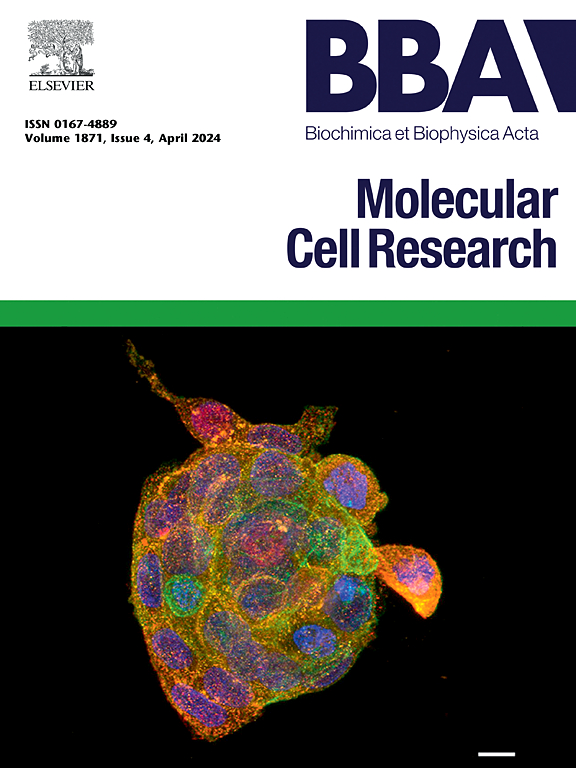Browning of inguinal white adipose tissue by the novel lignan (−)-secoisolariciresinol 4-O-methyl ether attenuates diet-induced obesity through mitochondrial and peroxisomal activation
IF 4.6
2区 生物学
Q1 BIOCHEMISTRY & MOLECULAR BIOLOGY
Biochimica et biophysica acta. Molecular cell research
Pub Date : 2025-04-05
DOI:10.1016/j.bbamcr.2025.119952
引用次数: 0
Abstract
Studies indicate that the induction and activation of brown and beige adipocytes, which can enhance energy expenditure, may be beneficial for managing obesity and its associated diseases. This study investigated whether a novel lignan (−)-secoisolariciresinol 4-O-methyl ether (S4M) obtained from arctigenin inhibited diet-induced obesity by the browning of white adipose tissue (WAT). S4M treatment inhibited adipogenesis and lipid accumulation in white-induced 3T3-L1 adipocytes and in zebrafish embryonic development. Moreover, S4M treatment promoted browning in white adipocytes by increasing TOM20, UCP1, and PGC1α protein levels and consequently upregulating the mitochondrial content. S4M treatment significantly promoted mitochondrial fission by increasing the expression of DRP1. Furthermore, it enhanced peroxisomal biogenesis and function by inducing PEX13, ACOX1, and catalase. Mdivi-1, a mitochondrial dynamics inhibitor, diminished the browning effect of white adipocytes by the S4M treatment. This study found that S4M treatment inhibited weight gain in high-fat diet-induced obese mice, decreased the weight of WAT, and increased the abundance and function of mitochondria and peroxisomes in inguinal WAT, suggesting that S4M treatment could increase energy expenditure. The results suggest that S4M has potential as a therapeutic agent for combating obesity and its associated metabolic disorders.

求助全文
约1分钟内获得全文
求助全文
来源期刊
CiteScore
10.00
自引率
2.00%
发文量
151
审稿时长
44 days
期刊介绍:
BBA Molecular Cell Research focuses on understanding the mechanisms of cellular processes at the molecular level. These include aspects of cellular signaling, signal transduction, cell cycle, apoptosis, intracellular trafficking, secretory and endocytic pathways, biogenesis of cell organelles, cytoskeletal structures, cellular interactions, cell/tissue differentiation and cellular enzymology. Also included are studies at the interface between Cell Biology and Biophysics which apply for example novel imaging methods for characterizing cellular processes.

 求助内容:
求助内容: 应助结果提醒方式:
应助结果提醒方式:


